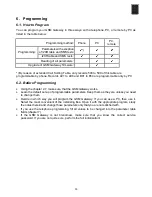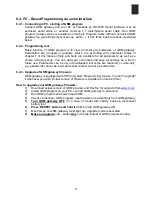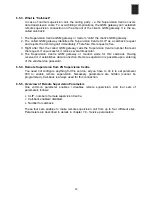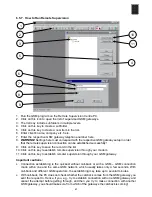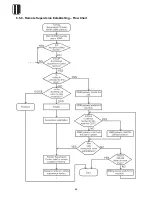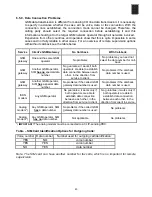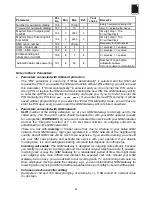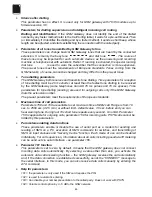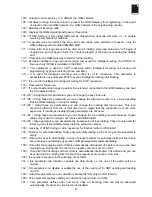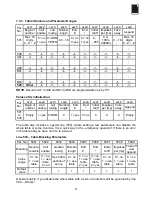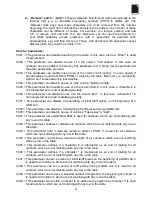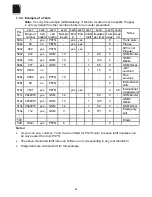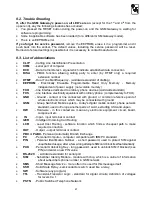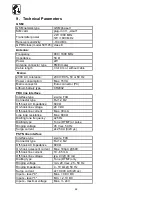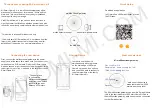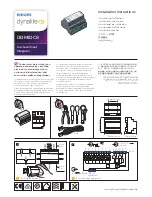
47
105 = Volume control option by +/- 6 dB from the GSM network.
106 = Disables roaming in frontier areas to prevent the GSM Gateway from registering, in the event
of a fault in the own GSM network, in a GSM network of the neighbouring country.
107 = Disables all incoming calls.
108 = Displays the GSM signal intensity every 10 seconds.
109 = If SIM memory is full, oldest SMS will be erased when new one will come in – to enable
receiving commands for switches.
110 = A greater value can reduce the echo, but it can cause some distortion of speech – only for
GSM gateways with module SIEMENS M20.
111 = Value tells, how long silence will be after end of dialling. Very long value can "cut" begin of
ringing tone, but not begin of call.112 = Sets the length of the beep announcing the dialling
end.
113 = Timeout for the GSM Gateway to wait for further dialling.
114 = Extension number to ring upon an incoming call, except for intelligent routing. On a PBX C.O.
line used only if DISA is available in the PBX.
115 = This parameter is used for CLIP conversion within Intelligent Incoming call routing and
programming by phone (entering phone numbers).
116 = It is used for Intelligent Incoming call routing for CLIP conversion. This parameter is
accessible also as parameter 6002 in section Intelligent Incoming Call Routing.
117 = It is used for Intelligent Incoming call routing for CLIP conversion.
118 = Reserved for future use.
121 = If a remote extension hangs up earlier the extension connected to the GSM Gateway can hear
the tone selected here.
122-123 = Using these two parameters you can change the busy tone rate.
131-136 = Using these six parameters you can change the dial tone course. It is a tone signalling
that the GSM Gateway is ready for dialling.
141-146 = Using these six parameters you can change the roaming dial tone course. This tone
should be different from the normal dial tone to signal that the connection is much more
expensive. If roaming is disabled, these parameters are not used.
151-152 = Using these two parameters you can change the tone dialling receiver features. Higher
values may make the receiver not receive all dialled digits!
153-154 = these parameters can accelerate the transmission of tone dialling. They are only used for
incoming calls if the GSM Gateway dials the extension number.
155 = receiving of DTMF during a call is necessary for function “write to I2CR table”.
156 = Number for automatic dialling ("baby-call). Automatic dialling is OFF as long as this parameter is
empty.
157 = Time-out for user to start dialling, in case of present number for automatic dialling. If this time is
over and user is not dialling any number, GSM gateway starts automatic dialling.
158 = Time after that outgoing call to GSM is automatically interrupted. 30s before end you can hear
warning tone. During last 10s short tone repeats every second. 0-no limit.
159 = Time after that incoming call from GSM is automatically interrupted. 30s before end you can
hear warning tone. During last 10s short tone repeats every second. 0-no limit.
160 = the number necessary for the sending of any SMS.
161 = this parameter can disable or enable the data mode, i.e. the use of the serial port as a
modem.
162 = this parameter can disable or enable the use of the serial port for SMS sending and reading
on a PC.
165 = Using this parameter you can disable or enable the "Security Centre” function.
166 = This parameter enables sending out information about calls via COM
181 = This parameter defines after how many rings an incoming data call will be answered
automatically. If set at zero, the function is disabled.
Содержание ATEUS 501106E
Страница 2: ......
Страница 32: ...30 5 2 Description of GSM Gateway PCB ...
Страница 44: ...42 6 5 8 Remote Supervision Establishing Flow Chart ...
Страница 66: ......
Страница 67: ... 2004 2N TELEKOMUNIKACE a s Prague DR 1101 v 1 1 ...

